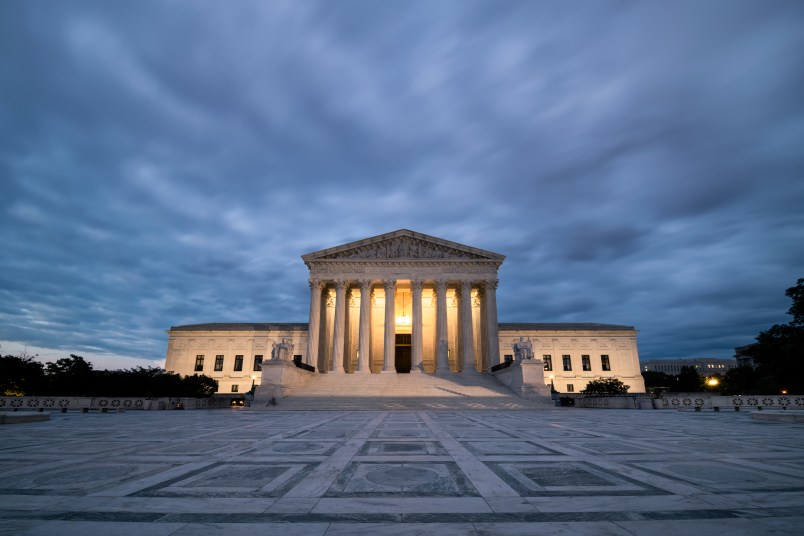I wanted to refer back to the email from TPM Reader SR which I published last night. SR referred to yesterday’s email from TPM Reader TL about government lawyers and the challenge they face taking stock of the fundamental changes in today’s judiciary. SR interpreted this as a matter of toughness or willingness to take extreme steps to advance policy outcomes. As he put it, these roadblocks stymie Democrats but they didn’t create an obstacle for Republicans or Trumpers because they just ignored the legal advice. “The difference is integrity. Dems have it. Reps don’t. You knew that already.”
This is not at all what we’re talking about. Certainly not what I’m talking about and I’m quite confident not what TL was talking about either. Toughness or willingness to break things is another metric that can be very important. But that’s not what we’re talking about here.
What TL was talking about is that government lawyers and lawyers involved in regulatory or governmental work generally are trained to see judges as something like referees. They’re imperfect like all referees. They have biases, political orientations, ideologies. But fundamentally they’re trying to call balls and strikes as they see them. In that context, you don’t want to force or risk decisions that might have bad impacts down the road or create bad law deriving from weird facts. You also don’t want to give the referees the sense that you’re reckless or playing fast and loose. Because then they’ll doubt your good faith in other contexts, apply greater levels of scrutiny then they otherwise might. There’s also a general professional reflex in which lawyers think it looks bad if you’re constantly getting overruled in the courts. Either you’re not a very good lawyer or you’re indifferent to the rules.
All of these rules and tendencies make sense if judges are broadly operating in the balls-and-strikes model or operating in a consistent interpretive framework. But what if instead of calling balls and strikes they’re trying to make sure you lose? And by “you” I specifically mean you, your boss or your party. Suddenly that framework of caution and avoiding decisions or actions you think judges might strike down stops making sense. Indeed, if you shape your actions by anticipating judicial interventions you take the burden of the judges’ or courts’ corrupt behavior on yourself rather than placing it on them. To a great extent this is what we see playing out today. By avoiding taking actions that justices are likely to strike down, the White House is channeling the mix of fear, outrage and anger toward itself rather than the Court where it actually should go. If judges want to abuse their power and block legitimate executive or legislative action, it becomes critical to make them do it in the full light of day and make their abuses public rather than obscure them by doing the justices’ dirty work for them.
This is part of the reason it’s so important to pass a Roe law in January 2023. Might the Court strike it down? Sure. But if the justices are going to abuse their power, actually force them to do it. That’s how you illustrate the Court’s corruption and illegitimacy for the public and lay the groundwork for reform. If you just say, “Well, what’s the point? The Court will just strike it down,” then you condemn yourself to an inaction that directs the obloquy and outrage the Court has earned on yourself. That’s bad politics and bad substance in every direction. And it’s a big part of the mess the White House has gotten itself into. Toughness is important. But what we’re talking about here isn’t toughness. It’s approaching political and legal questions with an accurate understanding of how the judiciary generally and the Supreme Court specifically currently operates.
That leaves us with a final point. Many think that the Supreme Court is the only branch with responsibility for interpreting the Constitution. That’s not true, though many began to think in those terms in the latter part of the 20th century. The older and correct view is that each branch of government has an equal responsibility to interpret the Constitution. The courts have a specific role in reviewing those judgments as they arise in specific cases. But the responsibility is general. That is relevant here because with a renegade Supreme Court the other branches should act in line with a good-faith understanding of what the Constitution allows. Let the Supreme Court make its judgments. If they are unreasonable or illegitimate, such give and take should lay the groundwork for other constitutional means for the other two branches of government to bring the Court to heel. The executive and Congress should neither pull their punches or exceed their actual constitutional mandates.






